by Kapilas Bhuyan
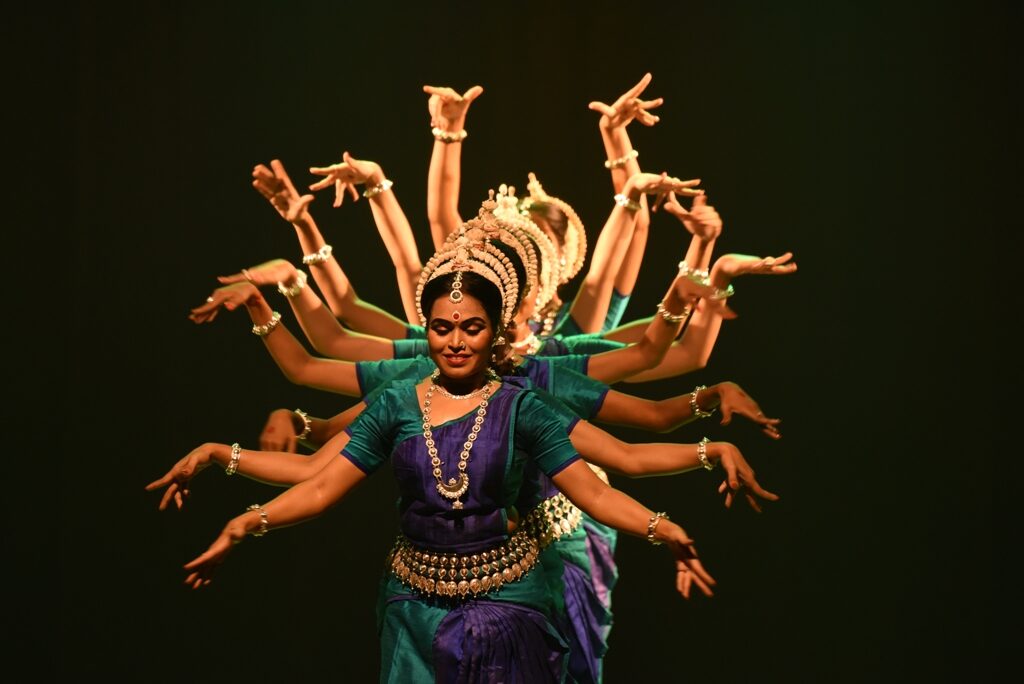
The most coveted classical dance and music festival of the town was concluded yesterday evening with much fanfare. Despite continuous drizzling Rabindra Mandap was full to the brink by the enthusiastic audience those who take much interest in enjoying the classical fares.
In keeping with Guru Kelucharan Mohapatra’s heartfelt wishes, Srjan has been conducting the Guru Kelucharan Mohapatra Award Festival since 1994 and this time round celebrating the 25th year of silver jubilee. The regular five-day event OMC Guru Kelucharan Mohapatra Award Festival was extended to a weeklong fare to mark the special occasion.
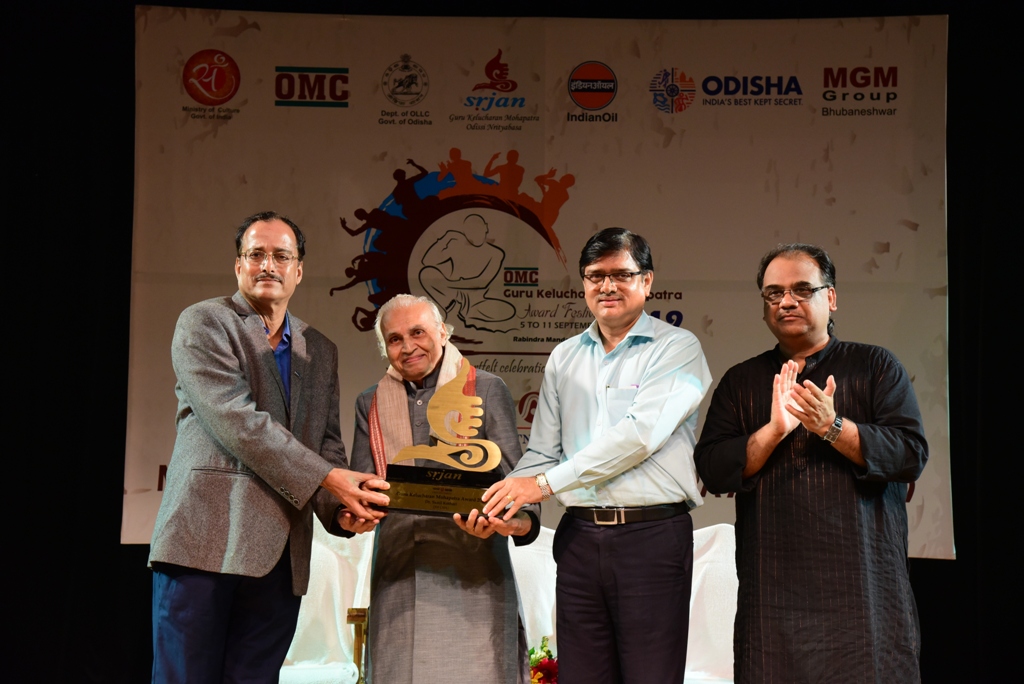
The closing ceremony commenced with the presentation of the prestigious awards to very eminent personalities of the country for their contribution to the field of classical performing arts. The ‘NALCO Guru Kelucharan Mohapatra Award 2019’ was presented to Guru Harmohan Khuntia, Tabla maestro, for his immense contribution to the field of Music, to Guru Durga Charan Ranbir, veteran Odissi dance Guru for his invaluable work to the field of Dance, to Dr. Sunil Kothari and Smt. Leela Venkataraman, eminent Dance Critics and Authors, for their lifetime achievements and contribution to the performing arts, and to renowned Art Photographer, Avinash Pasricha, for his pioneering work in the field of Photography. Earlier, this award was given each year to two acclaimed artistes from the fields of Dance, Theatre, Music, and Cinema. But for the special occasion of the silver jubilee celebration this year Srjan increased the number of awards to five. The NALCO Guru Kelucharan Mohapatra Award has a respectable allocation of Rs.1,00,000/- to each artiste and a citation.

Besides, five exceptionally talented performing artistes under the age of 40 years in the field of classical dance & Odissi music were awarded with the NALCO Guru Kelucharan Mohapatra Yuva Prativa Samman 2019 to acknowledge their outstanding performances. Its primary focus was to revive the all-important role of the solo dancing in the classical idiom. This year it was presented to Smt. Swapnokalpa Dasgupta (Odissi Dance), Sri Rahul Acharya (Odissi Dance), Smt. Rajashri Praharaj (Odissi Dance), Smt. Anwesa Mahanta (Sattriya Dance), and Sri Satyabrata Katha (Odissi Music), each of whom was presented with a cash prize of Rs. 25,000/- and a citation.
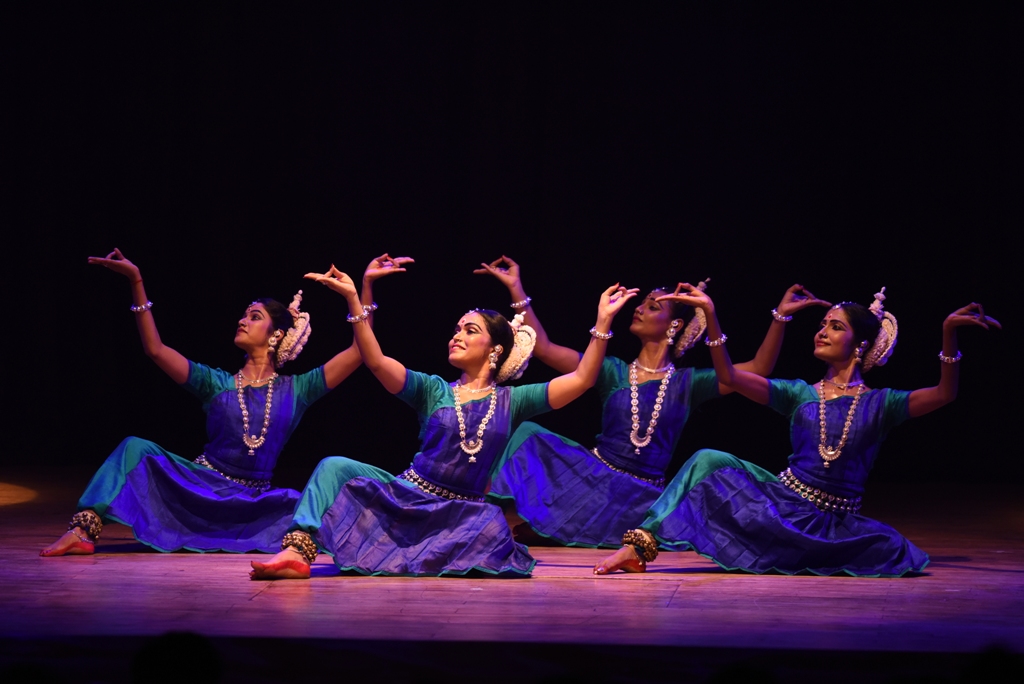
To mark the closing ceremony, the dance ensemble of Srjan presented a group recital ‘Namami Gange’, an Ode to Mother Ganga, choreographed by Guru Ratikant Mohapatra, scripted by Pandit Nityananda Mishra, and set to Shri Lakshmikant Palit’s music. ‘Namami Gange’ is the story of the descent of mother Ganga from the locks of Lord Shiva. Beginning with an invocation to Ganga, the story of the river starts with the Ashwamedha Yagna of King Sagara and moves on to cover its journey from the Himalayan peaks, through the hills of Gomukh, travelling across the Gangetic plains, and finally into the Bay of Bengal. Once, in its glorious past, mother Ganga provided enormous benefits to all who inhabited its banks, but the ungrateful human beings for their unquenchable greed and persistent folly have been polluting the river. The dance recital is intended at giving a wakeup call to the general people of the country and spread awareness to act towards the survival of the river.
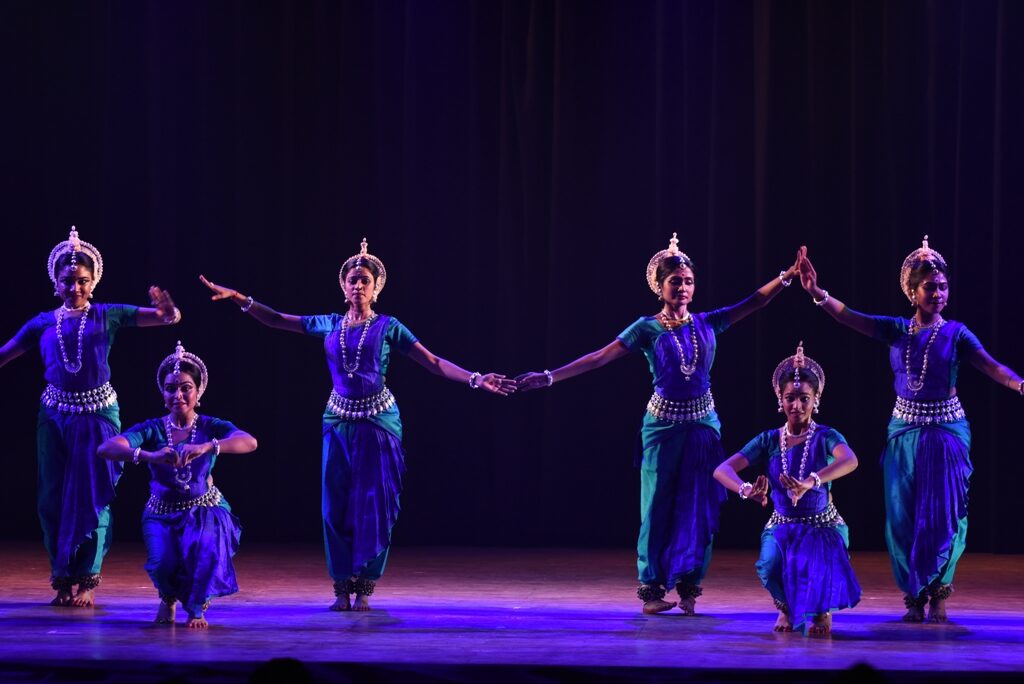
The Inaugural of the Festival
On the inaugural evening of the OMC Guru Kelu Charan Mohapatra Award Festival, the first music recital was presented by the celebrated Bhajan singer, Shri Anup Jalota, popularly known as the Bhajan Samrat. Shri Jalota. Among his series of recitals he won over the audience with singing of his celebrated Bhajan Aisi Lagi Lagan, set to Raag Kirvani and Jag Mein Sundar Hain Do Naam set to Raag Gurjari Todi, and many other heart touching renditions. He was accompanied by Koyel Tripathy on the Vocals, Rashid Khan on the Violin, Pradeep Ghosh on the Tabla and Himanshu Tiwari on Guitar.
In the dance section of the inaugural session the Cuttack based Gunjan Dance Academy presented their Odissi dance recitals led by renowned Odissi exponent Meera Das. Being conceptualised and choreographed by Meera Das, Gunjan presented ‘Moods of Rhythm’ followed by ‘Dashavatar’. ‘Moods of Rhythm’ explores the styles and patterns of the Odissi Mardala, and creates many moods, and celebrates the idea of romance through rhythm. The music and rhythm for the presentation was composed by the rhythm maestro Dhaneswar Swain. ‘Dashavatar’ was an expressive dance depicting the ten avatars or incarnations of Lord Vishnu. The highlight of Gunjan’s presentation was that Meera Das, the renowned Odssi dancer and guru performed along with her group.
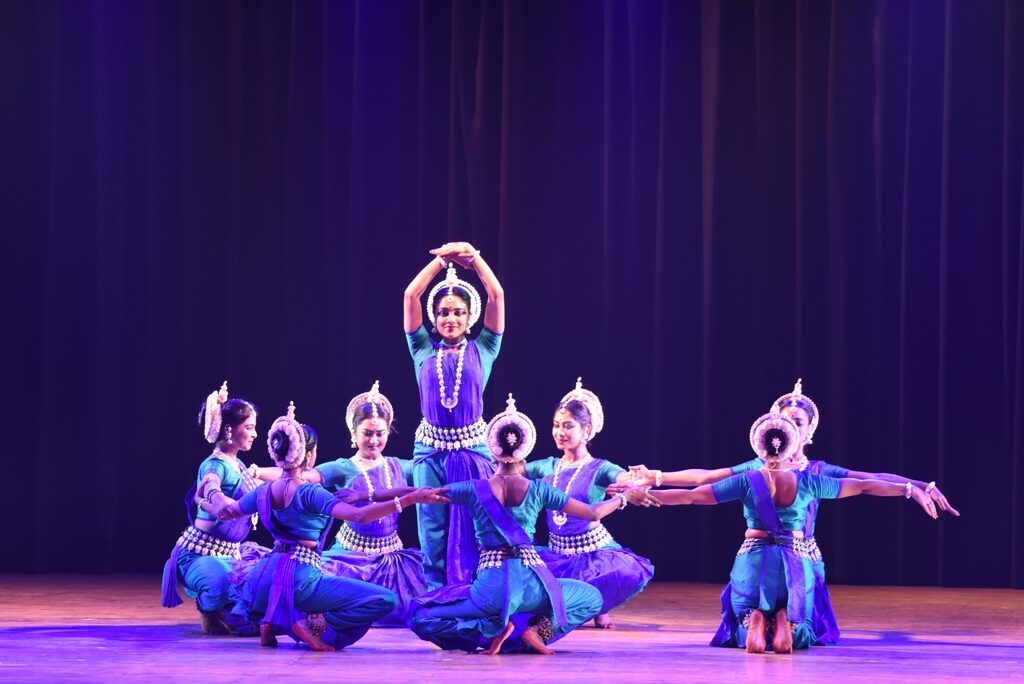
‘Ahimsa’, A Complex, yet Delightful Narrative
The second day of the festival was commenced with the classical music fusion recital by Flautist Paras Nath, Violinist Deepak Pandit, and ‘Mandolin’ Rajesh being accompanied on the Tabla by Prashant Sonagra. The highlight of the musical presentation was the final piece, a single composition featuring 14 different ragas set to raga Ragamaalika. This was indeed a striking and memorable creative collaboration of musical harmony.
The music session was followed by Odissi dance group presentation by ‘Suravi’ and ‘Orissa Dance Academy’, the two established institutions of Odisha. ‘Suravi’ initiated the dance session with their presentation of Suryashtaka, a hymn recited to Lord Surya to invoke blessings of good health, abundance and longevity. Set to the music composition of Ramhari Das, this solo presentation was originally choreographed by Durga Charan Ranbir, but it was adapted to a group composition by Pitambar Biswal.
On the other hand, ‘Orissa Dance Academy’ came up with their presentation ‘Ahimsa: An Ode to the Father of the Nation’. In this piece Gandhi’s life is woven as a poetic appliqué where his ideas and philosophy of life are showcased through music and dance. His ideas of truth, nonviolence, Swadeshi, Swaraj, and self-realization are taken as metaphors and the historical events symbolizing turning points in the life of a nation are used. Scripted by Kedar Mishra, and set to the music composition of Ramhari Das. This dance narrative was supplemented with selected verses by Narsi Meheto, Sumitra Nandan Pant, Harivansh Rai Bachan and Radhamohan Gadanayak, and choreographed by Aruna Mohanty.
Mesmerizing Sarangi, Krishna-Kali Comparison and Sabda Swara Pata in Odissi Dance Composition
On the third evening of the festival, the first presentation was the Hindustani Music recital by renowned Sarangi exponent Sabir Khan being accompanied by young and versatile Tabla player Ishaan Ghosh. Exploring novel interpretations of Sarangi playing, Sabir Khan delved into the nuances of the beautiful Vachaspati Raag. With its celebratory notes, this raga invoked a feeling both of happiness and gaeity. In their recital, they also explored folk and Rajasthani compositions.
In the only solo presentation of the festival, Niharika Mohanty, senior disciple of Guru Kelucharan Mohapatra, and founder-director of Guru Shradha, California, USA, presented two dance pieces, Behag Pallavi, and Braja ku chora asichi, an Odia Abhinaya. Both pieces have been composed by the legendary Guru Kelucharan Mohapatra. In her second presentation, Braja ku choro asichi, she beautifully portrayed mother Yashoda cajoling baby Krishna to sleep. If he does not, then a thief who has come to Braja would steal him away.
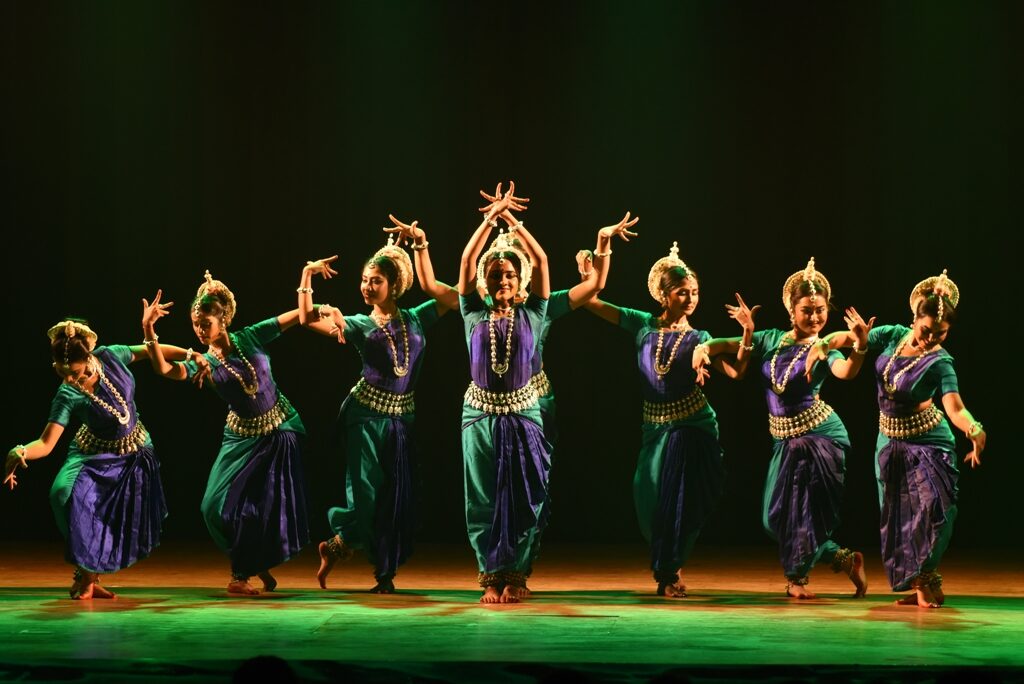
In the concluding presentation for the third evening the Bhubaneswar based Rudrakshya ensemble presented the Abhinay Jaha Krishna Saha Kali. This piece being set to the music composition of Ramahari Das and rhythm composition of Dhaneswar Swain, and choreographed by Guru Bichitrananda Swain had a story delving into the deep connection between Krishna (an avatar of Vishnu), and Kali (an avatar of Shakti). The composition explored the many similarities and contrasts between Krishna and Kali. While Krishna secures the cosmos with compassion, Kali maintains the cycle of birth and death of every being residing in it with her fierceness.
The first performance of the fourth evening was the Hindustani Vocal recital of Indrani Mukherjee, an accomplished exponent of the Benaras Gharana. She was accompanied on the Tabla by the creative and versatile musician Apurba Mukherjee and on the harmonium by Gourab Chatterjee, and Sachidananda Sahoo on the Tanpura. She presented three compositions through the course of the evening. Celebrating the season of monsoon with beautiful lyrics describing the rains, in the beginning of this inaugural session her presentation was a mesmerising rendition of musical harmony. Whereas her second presentation was a Kajri, in Raag Pilu, a rendition of Kehenva Mano Oh Radha Rani, her final recital of the evening was a Bhajan in Raag Hemant.
The following dance presentations of the evening were by Cuttack based Soor Mandir, led by Jyotsna Rani Sahoo and Bhubaneswar based Odissi exponent Guru Gajendra Panda’s group Tridhara. Set to the music composition of Agnimitra Behera and the rhythm composition of Dhaneswar Swain, and being conceived and choreographed by Jyotsna Sahoo, Soor Mandir’s presentation Rasanuraga was indeed a visual feast.
On the other hand, Tridhara presented three dance pieces, i.e. Mangalacharan, Kirvani Pallavi and Ram Bhajan. The Mangalacharan titled as Lakshmi Nrusingha Dhyana, began with an invocation to Lord Gajanana, and then a prayer to Lakshmi Nrusingha, Lord Vishnu in his half man half lion form, merged with Goddess Lakshmi on his lap. The verses for this presentation have been adapted from Prahalad Natak, the folk theatre of Ganjam district of Odisha. This Mangalacharan featured the hallmark Sabda Swara Pata, a key feature of the Guru Deba Prasad Das gharana, and was set to the music composition of Dr. Gopal Chandra Panda, and rhythm composition of Dr. Banamali Moharana, and being choreographed by Guru Gajendra Panda.
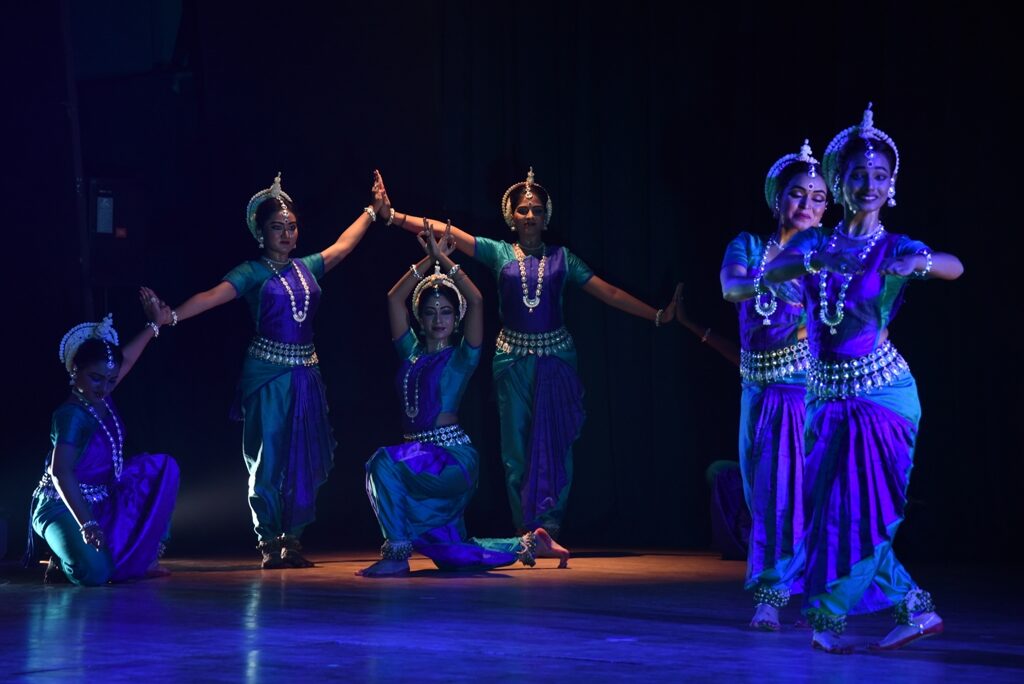
Akshara – Genesis of the Odia Alphabets
The first presentation of the fifth evening was a Sarod recital by Debasmita Bhattacharya, ably accompanied by Sandip Ghosh on Tabla. They presented an evening of Raag Durga. A seasonal raag based on Sharad Ritu, Debasmita Bhattacharya’s recital created a mellifluous ambience which perfectly portrayed this raga. Then Debasmita moved on to recite Bandish in a mood of celebrating the incoming of Durga Puja, Jaya Durge Ma.
The music session was followed by two group presentations by Nupur Dance Academy, under the mentorship of Niranjan Rout and Dr. Ileana Citaristi’s group Art Vision. After presenting the Khamaj Pallavi, a pure dance presentation, Nupur Dance Academy progressed to presentations of Abhinay on Shiva Stotram, celebrating the cosmic dance of Lord Shiva, and the Tandava, praising the Lord and seeking salvation from him through the power of dance.
Under the astute guidance of Dr. Ileana Citaristi, her group Art Vision presented the dance recital of Akshara – A Dalliance with the Odia Alphabet. This was a poetic composition which captures dancing with the Odia alphabet in a mood of gaiety, both as dalliance and also as a homage to this rich and ancient language. Beginning with the rituals of commencement of writing in any Odia village by drawing three circles for Brahma, Bishnu and Maheswar on the dry mud with lime sticks, these initial shapes and shadows of roundness were shown to denote the genesis of the Odia alphabet. Being choreographed by Dr. Ileana Citaristi, Akshara was scripted and conceptualized by renowned Odia Poet Devdas Chhotray, and set to the melodious musical composition of Lakshmikant Palit, and features special sand animation by sand-artist Sudarshan Pattnaik.
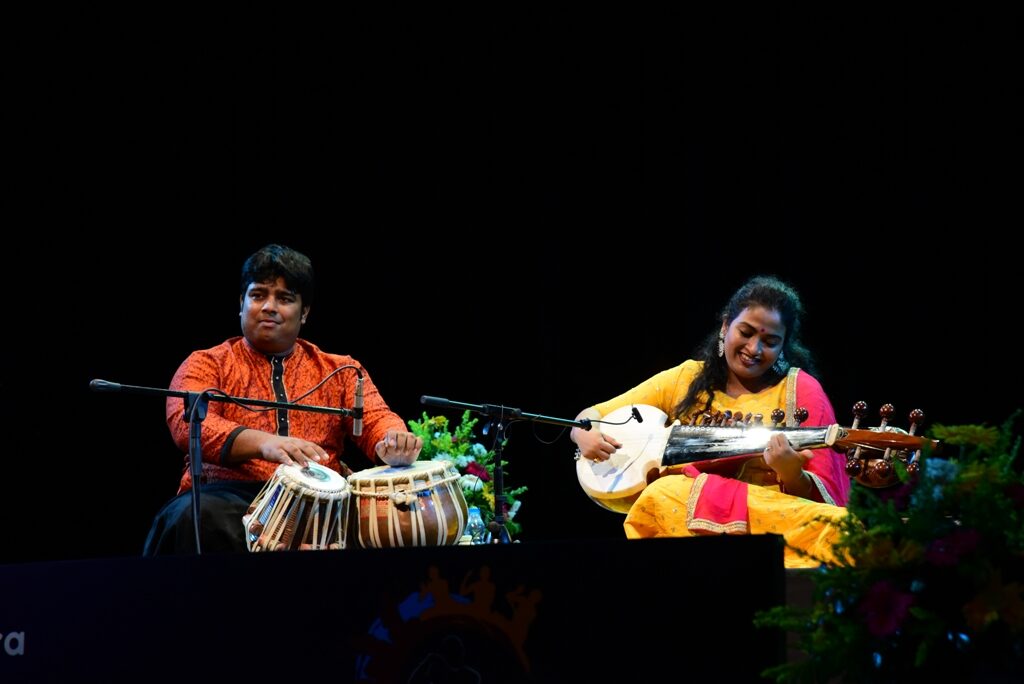
On the sixth evening, in the initial section, Odissi Music vocalist Bijay Kumar Jena presented his recital accompanied by eminent musicians of Odisha, Satchidananda Das on the Mardala, Srinibas Satpathy on the Flute, Balakrushna Jena on the Harmonium and Sitakanta Jena on the Manjira, etc. Highlighting the nuances and various facets unique to Odissi music, Bijay Kumar Jena began his recital with a Prabandh in Raag Behag and Jati Taal, “Prana dhana prana rakha dharuchi to painki” composed by eminent Odia poet Banamali. This was followed by the recitals of “Barada Bidhure Ana” composed by poet Benudhar Prabandh in Raag Marwa and Ektaali, and a Janana, “He Narayana” written by Abhirama Paramahansa set to Raag Vajrakanti. His concluding piece was a composition by Kavi Samrat Upendra Bhanja in Raag Bhairavi and Ektaali.
Following this, Nrutyashala, led by Ashok Kumar Ghos presented the production Mun, the Immortal Devil. Based on the theme of pride, ego, and vanity of man, the presentation depicted well known mythological stories from three yugas before moving on to the present. In the Satya Yuga, Hiranyaksha was killed by Narasimha, in the Treta Yuga, Ravana was defeated by Sri Rama, in the Dwapara Yuga, Kamsa was crushed by Krishna and in the Kali Yuga, Mun, existing as a manifestation of the three evils growing within was shown to be trounced only by Om. Thus, the presentation portrayed that in today’s world, each individual has a sense of ego and self-grandeur, and only the Almighty, Om can destroy it. Whereas the script was by Nabakishore Mishra, the dance recital was choreographed by Ashok Kumar Ghosal and set to the music composition of Himanshu Sekhar Swain, with the rhythm accompaniment of Dhaneswar Swain and Ajay Kumar.
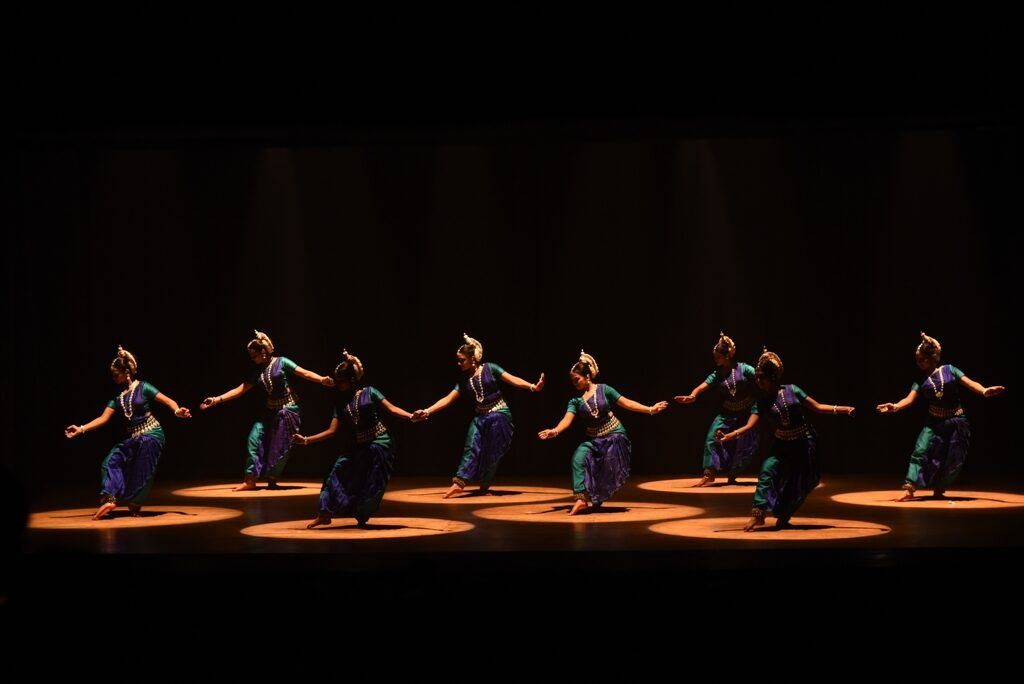
The concluding presentation on the penultimate evening was Jagannath Gopinath by Durga Charan Ranbir’s Nrutyayan ensemble. In this dance recital, a parallel has been drawn between the earlier form of Lord Krishna in Dwapara Yuga, and the rituals of Lord Jagannath at Puri. This composition has its literary base in multiple ancient texts including the Skanda Purana, Bhagavata by Atibadi Jagannath Das, and the poetry of Shri Goura Charan Adhikara and Shri Banamali Das. Set to Raga Malika and Talamalika, the script for this presentation was written by Kedar Mishra, rhythm composition is by Dhaneswar Swain and the dance choreography is by Durga Charan Ranbir.
All the performances of the weeklong festival were aided by the brilliant light designing of Debi Prasad Mishra, and the able compering of Dr. Srinivas Ghatuary.
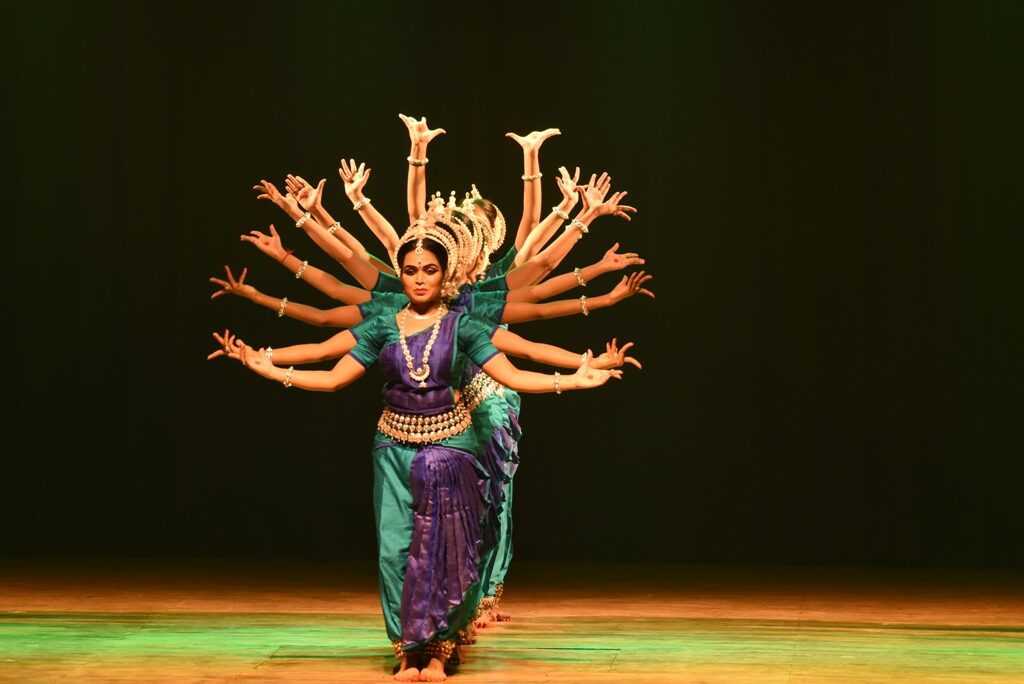
It’s worth mentioning here that Srjn’s attempt to commemorate the 25th year celebration of the GKCM Award Festival, this time around a seven-day festival in place of the annual five-day event is being organized. This in fact is the largest fare of classical dance in Odisha that has made itself equal to the festival of a pan national level.
The most noteworthy aspect of the Silver Jubilee celebration of the OMC GKCM Award Festival is that the focus of the festival has been only on Odissi dancing to mark the occasion. However, dance recitals of other Indian Classical Dances have been missing, and to get them back to the arena of the festival the Bhubaneswar audience should most hopefully wait until the next time.
(The writer is a Senior Journalist and National Award Winning Filmmaker based in Bhubaneswar)






















